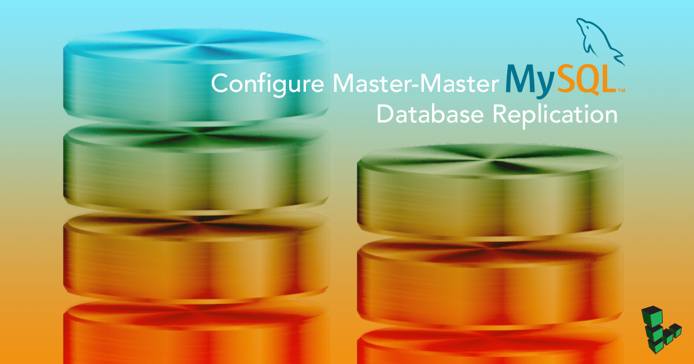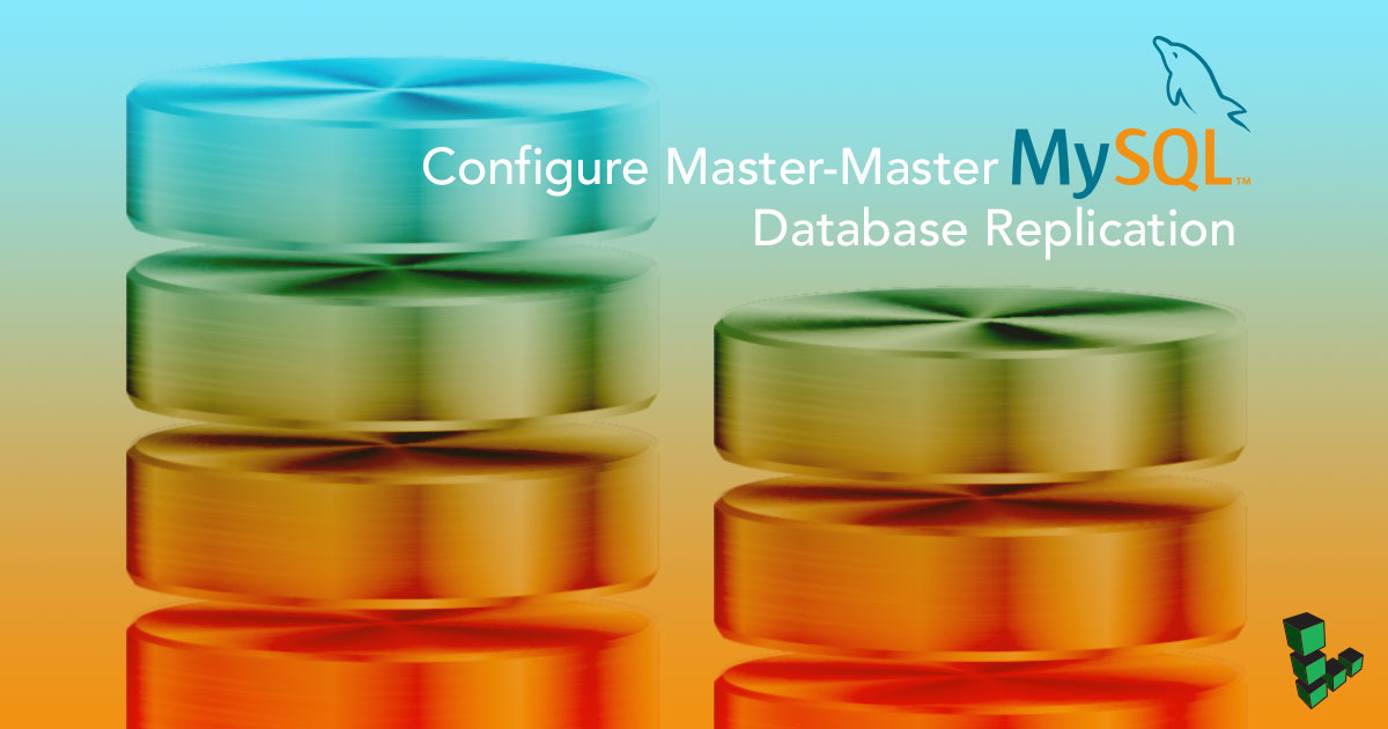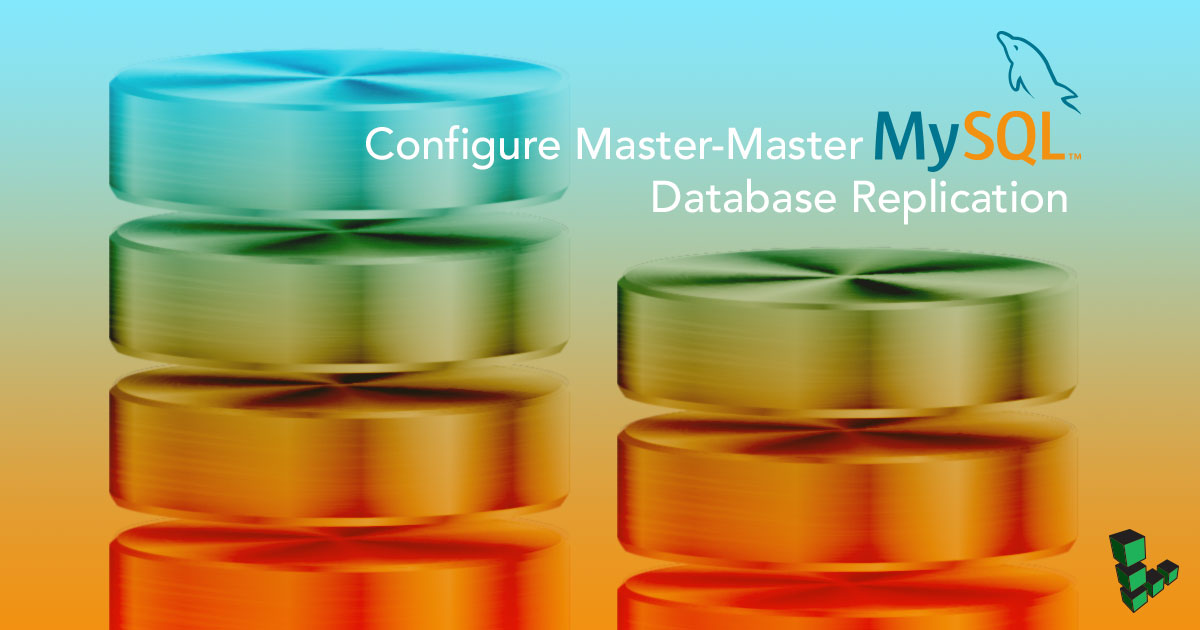Configure Master-Master MySQL Database Replication


What is MySQL Master-Master Replication?
MySQL Master-Master replication adds speed and redundancy for active websites. With replication, two separate MySQL servers act as a cluster. Database clustering is particularly useful for high availability website configurations. Use two separate Linodes to configure database replication, each with private IPv4 addresses.
NoteThis guide is written for a non-root user. Commands that require elevated privileges are prefixed with
sudo. If you’re not familiar with thesudocommand, you can check our Users and Groups guide.This guide is written for Debian 9, Ubuntu 18.04, and Ubuntu 20.04.
If you are unsure of which version of MySQL has been installed on your system when following the steps below, enter the following command:
mysql --version
Install MySQL
Use the following commands to install MySQL on each of the Linodes:
sudo apt-get update sudo apt-get upgrade -y sudo apt-get install mysql-server mysql-clientRun the MySQL secure installation command. You will be asked to create a root password. It is recommended you select yes to all of the questions:
mysql_secure_installation
Edit MySQL’s Configuration
Edit the
/etc/mysql/my.cnffile on each of the Linodes. Add or modify the following values:Server 1:
- File: /etc/mysql/my.cnf
1 2 3 4 5 6 7 8 9 10 11[mysqld] server_id = 1 log_bin = /var/log/mysql/mysql-bin.log log_bin_index = /var/log/mysql/mysql-bin.log.index relay_log = /var/log/mysql/mysql-relay-bin relay_log_index = /var/log/mysql/mysql-relay-bin.index expire_logs_days = 10 max_binlog_size = 100M log_replica_updates = 1 auto-increment-increment = 2 auto-increment-offset = 1
Note
If using MySQL 8.0.25 or earlier, replacelog_replica_updateswithlog_slave_updates(within both Servers 1 and 2). See MySQL documentation for details.Server 2:
- File: /etc/mysql/my.cnf
1 2 3 4 5 6 7 8 9 10 11[mysqld] server_id = 2 log_bin = /var/log/mysql/mysql-bin.log log_bin_index = /var/log/mysql/mysql-bin.log.index relay_log = /var/log/mysql/mysql-relay-bin relay_log_index = /var/log/mysql/mysql-relay-bin.index expire_logs_days = 10 max_binlog_size = 100M log_replica_updates = 1 auto-increment-increment = 2 auto-increment-offset = 2
Note
If using MySQL 8.0.25 or earlier, replacelog_replica_updateswithlog_slave_updates(within both Servers 1 and 2). See MySQL documentation for details.Edit the
bind-addressconfiguration in order to use the private IP addresses, for each of the Linodes.- File: /etc/mysql/my.cnf
1bind-address = x.x.x.x
Once completed, restart the MySQL application:
sudo systemctl restart mysql
Create Replication Users
Log in to MySQL on each of the Linodes:
mysql -u root -pConfigure the replication users on each Linode. Replace
x.x.x.xwith the private IP address of the opposing Linode, andpasswordwith a strong password:MySQL8 and Above
CREATE USER 'replication'@'x.x.x.x' IDENTIFIED BY 'password'; GRANT REPLICATION SLAVE ON *.* TO 'replication'@'x.x.x.x';Below MySQL8
GRANT REPLICATION SLAVE ON *.* TO 'replication'@'x.x.x.x' IDENTIFIED BY 'password';Run the following command to test the configuration. Use the private IP address of the opposing Linode:
mysql -u replication -p -h x.x.x.x -P 3306This command should connect you to the remote server’s MySQL instance.
Configure Database Replication
While logged into MySQL on Server 1, query the master status:
SHOW MASTER STATUS;Note the file and position values that are displayed:
mysql> SHOW MASTER STATUS; +------------------+----------+--------------+------------------+ | File | Position | Binlog_Do_DB | Binlog_Ignore_DB | +------------------+----------+--------------+------------------+ | mysql-bin.000001 | 277 | | | +------------------+----------+--------------+------------------+ 1 row in set (0.00 sec)On Server 2 at the MySQL prompt, set up the replica functionality for that database. Replace
x.x.x.xwith the private IP from the first server. Also replace the value forsource_log_filewith the file value from the previous step, and the value forsource_log_poswith the position value.MySQL 8.0.22 or Above:
STOP REPLICA; CHANGE REPLICATION SOURCE TO source_host='x.x.x.x', source_port=3306, source_user='replication', source_password='password', source_log_file='mysql-bin.000001', source_log_pos=106; START REPLICA;MySQL 8.0.22 or Earlier:
STOP SLAVE; CHANGE MASTER TO master_host='x.x.x.x', master_port=3306, master_user='replication', master_password='password', master_log_file='mysql-bin.000001', master_log_pos=106; START SLAVE;On Server 2, query the master status. Again note the file and position values.
SHOW MASTER STATUS;Set the replica database status on Server 1, utilizing similar commands as in step 2. When entering the commands, use the IP address of Server 2 and the file and position values you just collected in the previous step.
Test by creating a database and inserting a row:
Server 1:
create database test; create table test.flowers (`id` varchar(10));Server 2:
show tables in test;
When queried, you should see the tables from Server 1 replicated on Server 2. Congratulations, you now have a MySQL Master-Master cluster!
More Information
You may wish to consult the following resources for additional information on this topic. While these are provided in the hope that they will be useful, please note that we cannot vouch for the accuracy or timeliness of externally hosted materials.
This page was originally published on







